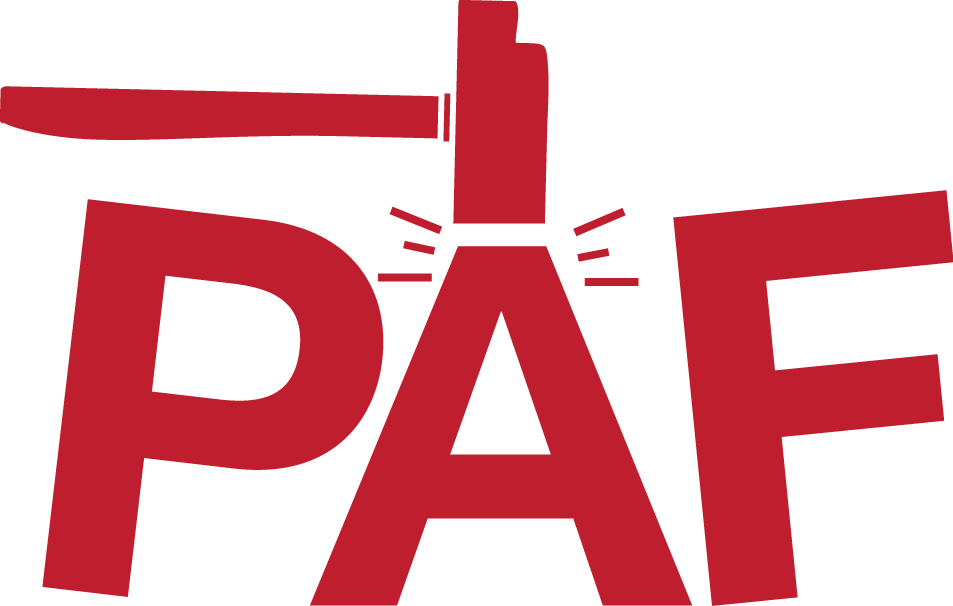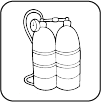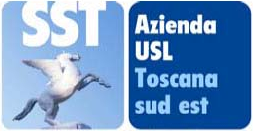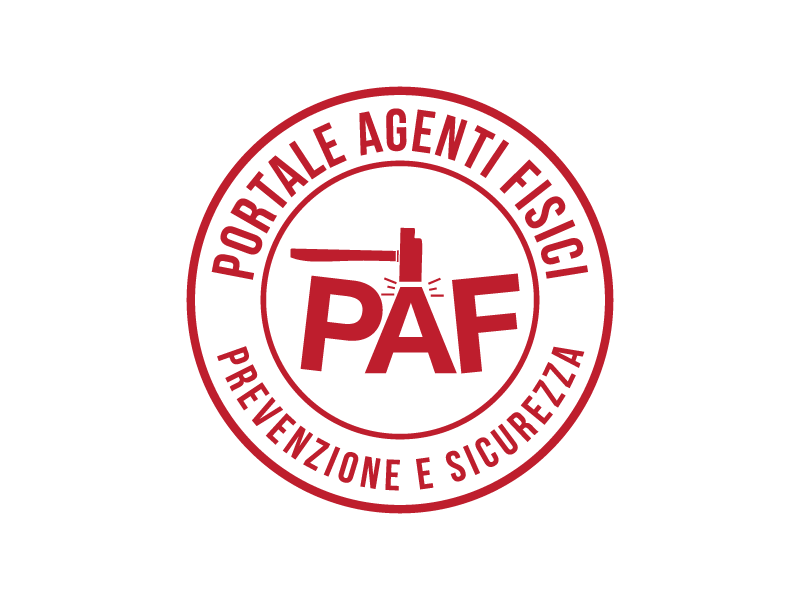Legislation on Hyperbaric Atmospheres
In Italy, hyperbaric risk is to be assessed referring to Article 181 of Legislative Decree 81/08.
Article 181 - Risk Assessment
1. Within the scope of the assessment referred to in Article 28, the employer shall evaluate all risks arising from exposure to physical agents in order to identify and apply appropriate health and safety measures with special consideration for the standards of Good Engineering Practice.
Appropriate methods for assessment and prevention, as is assessed for microclimate, should be set out for each specific working condition, with reference to the standards of Good Engineering Practice and to existing regulations.
Legislation (Italy)
Decree Law 24 January 2012. “Urgent measures on competition, infrastructure development and competitiveness”, also known as the “deregulation decree”.
The foregoing decree refers to the UNI 11366: 2010 standard, “Health and Safety in Underwater and Hyperbaric Professional Activities – Operating procedures, the Italian National Standards Body, Milan, 2010”.
Point 2, of Article 16, cited above, states that the activities “referred to in Article 53 of Presidential Decree No. 886 of 24 May 1979 shall be undertaken pursuant to current applicable regulations and the standards of Good Engineering Practice referred to in the UNI 11366 Standard”. Therefore, the reference gives the standard binding value.
The reference to Presidential Decree No. 886 of 1979 is mandatory: in fact, Article 53 concerns the general provisions on the employment of divers, that is to say, on “the performance of work underwater for positioning platforms, inspection and maintenance of submerged equipment or for similar work”. Article 53 also states that these activities “are to be undertaken only by experienced and physically fit personnel, directed by a person with proven competence, in compliance with specific regulations and the standards of Good Engineering Practice”.
The reference to UNI 11366 in Decree Law 24 January 2012 defines a national legislative and regulatory framework capable of promoting professional underwater activities under the banner of the highest safety standards for all operators in the sector.
PRESIDENTIAL DECREE No. 321 of 20 March 1956.
Workplace health and safety standards for compressed air caissons (Official Journal No. 109 of 05 May 1956 ordinary supplement).
PRESIDENTIAL DECREE No. 126 of 23 March 1998.
Regulation on rules for implementation of Directive 94/9/EC concerning equipment and protective systems intended for use in potentially explosive atmospheres
LAW No. 845 of 21 December 1978. Framework Law on Vocational Training. (Official Journal No. 362 dated 30 December 1978)
MINISTERIAL DECREE 13 January 1979. (Official Journal No. 47 dated 16 February 1979). Establishing the category of local service divers.
MINISTERIAL DECREE 02 February 1982
Amendment to Ministerial Decree 13 January 1979, establishing the category of local service divers.
MINISTERIAL DECREE 20 October 1986. (Official Journal No. 280 dated 2 December 1986). Regulation of professional underwater fishing.
TUSCANY REGIONAL LAW No. 54 OF 30 July 1997, Regulation of the profession of environmental guide.
SARDINIA REGIONAL LAW No. 9 of 26 February 1999, Standards for the regulation of the activities of underwater tourism operators.
LIGURIA REGIONAL LAW No. 19 of 4 July 2001, Standards for the regulation of the activities of underwater tourism operators.
Best practices for the safe conduct of underwater activities – Approved by the Standing Advisory Committee pursuant to Article 6 INAIL-ISPRA-ARPA (2013).
Technical Standards
EN 1127-1:2019 - Explosive atmospheres - Explosion prevention and protection - Part 1: Basic concepts and methodology
This document specifies methods for the identification and assessment of hazardous situations leading to explosion and the design and construction measures appropriate for the required safety. This is achieved by: - risk assessment; - risk reduction.
EN 1127-2:2019 - Explosive atmospheres: Explosion prevention and protection ATEX - Part 2: Basic concepts and methodology for mining
This document specifies methods for the identification and assessment of hazardous situations leading to explosion and the design and construction measures appropriate for the required safety. This is achieved by: - risk assessment; - risk reduction.
EN 144-1:2018 - Respiratory protective devices - Gas cylinder valves - Part 1: Inlet connections.
This document specifies the dimensions and tolerances as well as the impact resistance and marking requirements of inlet connections for connecting cylinder valves to gas cylinders for respiratory protective devices (RPD).
EN 144-2:2018 -Respiratory protective devices - Gas cylinder valves - Part 2: Outlet connections.
This European Standard specifies the dimensions, tolerances and marking requirements of outlet connections for connecting regulators and cylinder valves for respiratory protective devices except those for diving applications.
EN 144-3:2003 - Respiratory protective devices - Gas cylinder valves - Part 3: Outlet connections for diving gases Nitrox and oxygen.
This standard takes into consideration the corrigendum of December 2003 (AC: 2003). The standard is applicable to the threaded fittings used for the connection between gas cylinder valves and a regulator for respiratory equipment for diving containing breathable nitrox gas with an oxygen content greater than 22% or oxygen. The standard specifies the dimensions and tolerances of the fittings used for respiratory protective devices
EN ISO 24803:2017 - Recreational diving services - Requirements for recreational diving providers (ISO 24803:2017)
ISO 24803:2017 specifies requirements for service providers in the field of recreational scuba diving and snorkelling excursions. It specifies the following areas of service provision: - introductory diving activities; - snorkelling excursions; - provision of training and education; - organized and guided diving for qualified divers; - rental of diving and snorkelling equipment. Service providers can offer one or more of these services. ISO 24803:2017 specifies the nature and quality of the services to the client. ISO 24803:2017 does not apply to freediving (also called "apnea diving").
EN ISO 11121:2017 Recreational diving services - Requirements for introductory programmes to scuba diving (ISO 11121:2017)
ISO 11121:2017 specifies minimum programme content requirements for training organizations for introductory scuba experiences in recreational scuba diving. Under no conditions are these requirements considered to be a standard for the training and qualification of scuba divers. ISO 11121:2017 applies to programmes that include participants being taken into an open water environment. It does not apply to programmes that are exclusively conducted in a confined water environment (e.g. swimming pools). ISO 11121:2017 also specifies the conditions under which this service is to be provided, which supplement the general requirements for recreational diving services specified in ISO 24803.
EN 14225-1:2017 Diving suits - Part 1: Wet suits - Requirements and test methods
This European Standard specifies the construction and performance requirements (including thermal) of wet suits for wear by divers for underwater activities where the user is breathing underwater. Marking, labelling, information meant to be provided at the point of sale, and instructions for use are also specified. Laboratory and practical performance tests are specified. Short sleeve jackets, short-leg trousers, under- and overgarments, and separate accessories such as gloves, hoods and boots are not within the scope of this document. NOTE Suits and shorties for snorkelling including underwater activities are not covered by this standard.
EN 14225-2:2017 Diving suits - Part 2: Dry suits - Requirements and test methods
This European Standard specifies the construction and performance of dry suits for wear by divers for underwater activities where the user is breathing underwater. Marking, labelling, information meant to be provided at the point of sale and instructions for use are also specified. Laboratory and practical performance tests are specified.
EN 14225-3:2017 Diving suits - Part 3: Actively heated or cooled suit systems and components - Requirements and test methods
This European Standard specifies the construction and performance of actively heated suits and actively cooled suits or components thereof, for wear by divers for underwater activities where the user is breathing underwater. Marking, labelling, information meant to be provided at the point of sale and instructions for use are also specified. Laboratory and practical performance tests are specified.
EN 250:2014 - Respiratory equipment - Open-circuit self-contained compressed air diving apparatus - Requirements, testing and marking
This standard applies to self-contained open-circuit compressed air underwater breathing apparatus and their sub-assemblies.
EN ISO 24802-1:2014 -Requirements for the training of scuba instructors -- Part 1: Level 1.
The standard specifies the competencies required of a scuba instructor in order to obtain a scuba instructor qualification from a training organization attesting that he/she has met or exceeded scuba instructor level 1 and specifies the evaluation criteria for these competencies.
EN ISO 24802-2:2014 -Requirements for the training of scuba instructors -- Part 2: Level 2.
The standard specifies the competencies required of a scuba instructor in order to obtain a scuba instructor qualification from a training organization attesting that he/she has met or exceeded scuba instructor level 2 and specifies the evaluation criteria for these competencies.
EN ISO 24801-1:2014 -Requirements for the training of recreational scuba divers -- Part 1: Level 1 - Supervised diver.
The standard specifies the competencies required of a recreational scuba diver in order to obtain a scuba diver qualification from a training organization attesting that he/she has met or exceeded scuba diver level 1 (“Supervised diver”) and specifies the evaluation criteria for these competencies.
EN ISO 24801-2:2014 -Requirements for the training of recreational scuba divers - Part 2: Level 2 - Autonomus diver
Specifies the competencies required of a scuba diver in order to obtain a scuba diver qualification from a training organization attesting that he/she has met or exceeded scuba diver level 2 ("Autonomous diver"), and specifies evaluation criteria for these competencies.
EN ISO 24801-3:2014 -Requirements for the training of recreational scuba divers - Part 3: Level 3 - Dive leader.
The standard specifies the competencies required of a recreational scuba diver in order to obtain a recreational scuba diver qualification from a training organization attesting that he/she has met or exceeded scuba diver level 3 (“Dive leader”) and specifies the evaluation criteria for these competencies.
EN ISO 15027-1:2012 - Immersion suits - Part 1: Constant wear suits, requirements including safety.
This standard takes into consideration the corrections dated 21 November 2012. The standard specifies the performance and safety requirements for thermal protection suits in the event of immersion. It applies to constant wear suits.
EN ISO 15027-2:2012 - Immersion suits - Part 2: Abandonment suits, requirements including safety.
This standard specifies the performance and safety requirements for thermal protection suits in the event of immersion. It applies to abandonment suits.
EN ISO 15027-3:2012 - Immersion suits — Part 3: Test methods.
This standard takes into consideration the corrections dated 21 November 2012. The standard specifies the performance and safety requirements for thermal protection suits in the event of immersion. It applies to constant wear suits and to abandonment suits.
UNI 11366: 2010 - Health and Safety in Underwater and Hyperbaric Professional Activities – Operating procedures, the Italian National Standards Body, Milan, 2010.
The UNI standard sets out the criteria and methods for the performance of professional underwater and hyperbaric activities at the service of the industry, the characteristics of the apparatus and the equipment used and the professional requirements that the personnel involved must possess to ensure the health and safety of those same workers during the performance of their duties. The foregoing STANDARD is referred to in Decree Law of 24 January 2012, which therefore gives the standard binding value.
ISO 11107:2010 - Recreational diving services - requirements for training programmes on enriched air nitrox (EAN)
The standard describes the level of competence required of a scuba diver in order to be awarded an enriched air nitrox (EAN) diver certification by a training organization. This standard also specifies the conditions under which the training is to be provided, in addition to the general requirements for the recreational diving services specified in ISO 24803.
EN 15565:2008 - Tourism services - Requirements for the provision of professional tourist guide training and qualification programmes.
The standard specifies the minimum requirements for the provision of professional training programmes and qualification of tourist guides.
EN 137:2007 - Respiratory protective devices. Self-contained open-circuit compressed air breathing apparatus with full face mask. Requirements, testing, marking.
This standard specifies the minimum performance requirements for open-circuit self-contained full-face mask compressed air breathing apparatus used as respiratory protective equipment, except for escape and underwater breathing apparatus. This equipment is intended for use in work situations where there is a low risk of over-pressurization of cylinders equipped with valves, due to very hot environmental conditions. Laboratory tests and practical use tests are included for verification of compliance with the requirements.
EN 14931:2006 - Pressure vessels for human occupancy (PVHO) - Multi-place pressure chamber systems for hyperbaric therapy - Performance, safety requirements and testing
This standard is applicable to the performance and safety requirements and their associated test methods for multi-place pressure chambers for hyperbaric treatment.
EN 1834-2:2001 - Reciprocating internal combustion engines - Safety requirements for design and construction of engines for use in potentially explosive atmospheres - Group I engines for use in underground workings susceptible to firedamp and/or combustible dust
This standard specifies the requirements and/or safety measures implemented to eliminate the hazards and limit the risks associated with Group I, Category M-2 reciprocating internal combustion engines, for use in underground work in firedamp atmospheres with or without flammable dust.
EN 145:2001 - Respiratory protective devices - Self-contained closed-circuit breathing apparatus compressed oxygen or compressed oxygen-nitrogen type - Requirements, testing, marking.
This standard specifies the minimum requirements for self-contained closed-circuit compressed oxygen (O2) and compressed oxygen-nitrogen (O2 - N2) breathing apparatus used as respiratory protective equipment, with the exception of apparatus intended for escape and underwater use.
EN 138:1996 - Respiratory protective devices. Fresh air hose breathing apparatus for use with full face mask, half mask or mouthpiece assembly. Requirements, testing, marking.EN 250:2014 - Respiratory equipment - Open-circuit self-contained compressed air diving apparatus - Requirements, testing and marking.
This standard defines the minimum requirements and relevant test methods for fresh air hose respirators to be used with full-face masks, half-masks or mouthpieces as respiratory protective devices. In addition, guidance on marking and instructions for use are provided.








